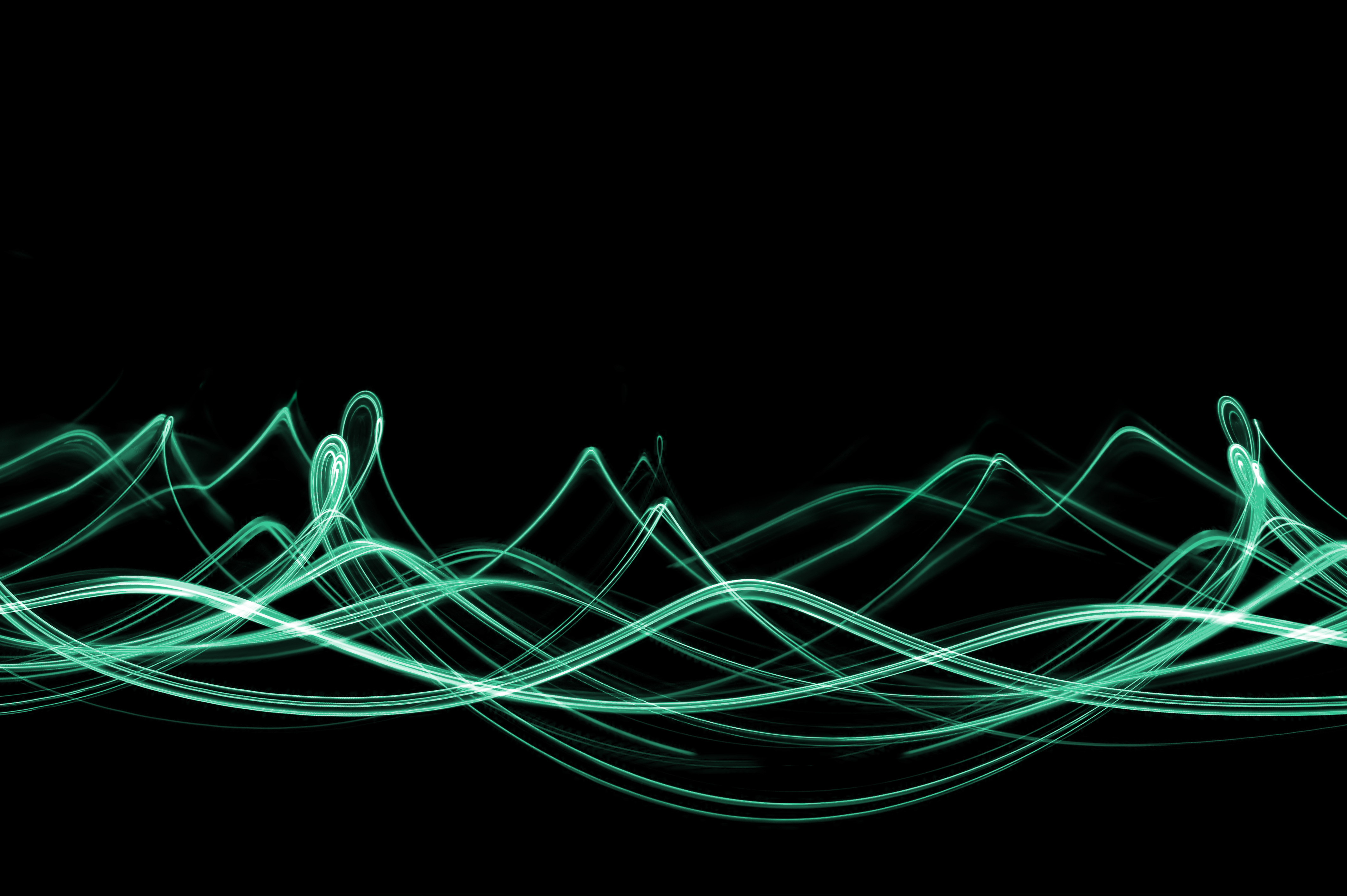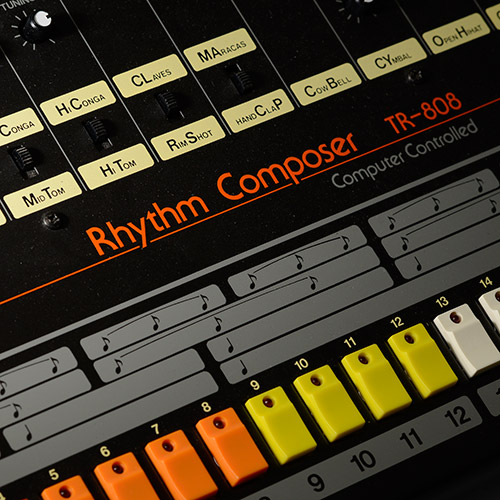Instrumental Instruments: Roland SH-101
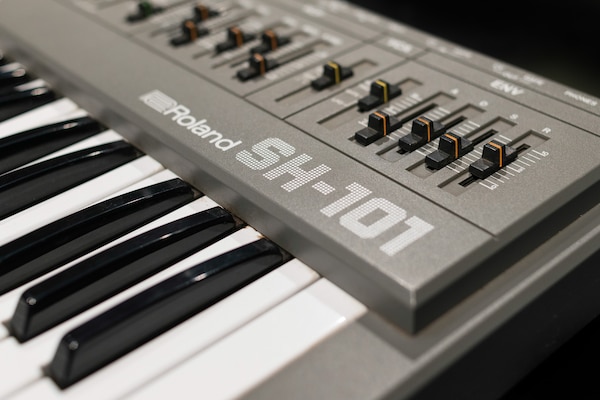
When it was first introduced, Roland’s keytar bombed. But then a new generation of dance music producers gave it a life of its own.
During the early 1980s, the Roland Corporation was determined to create mass-market synthesizers that appealed to both established pop and rock musicians, and those who couldn’t afford the high price tag that usually came with cutting-edge synthesis. Unfortunately, for the most part, they could never quite pull it off. Instead, many of the products they produced during this time period got used in a way the company had never intended.
Consider the lauded TR-808 Rhythm Composer. When it hit the market in 1980, it was designed as a cheap alternative to Roger Linn’s industry standard (but ridiculously expensive) LM-1 drum machine. The heavyweight percussion sounds, however, barely resembled the acoustic instruments they were meant to represent. So while the 808’s relatively affordable price tag and futuristic sound palette went on to define a string of nascent electronic music styles – most notably hip-hop and electro – it didn’t meet Roland’s or enough of its customers’ expectations, and they discontinued production of the machine in 1983.
Even more famously, there was the TB-303 bass synthesizer, which the Japanese company had designed as an electronic replacement for the trusty bass guitar player. This too flopped and was quickly discontinued, only gaining a new lease of life thanks to the accidental discovery of the now infamous “acid” sound, first mined by Chicagoan pioneers Phuture. To this day it remains one of the distinctive electronic instruments of all time.
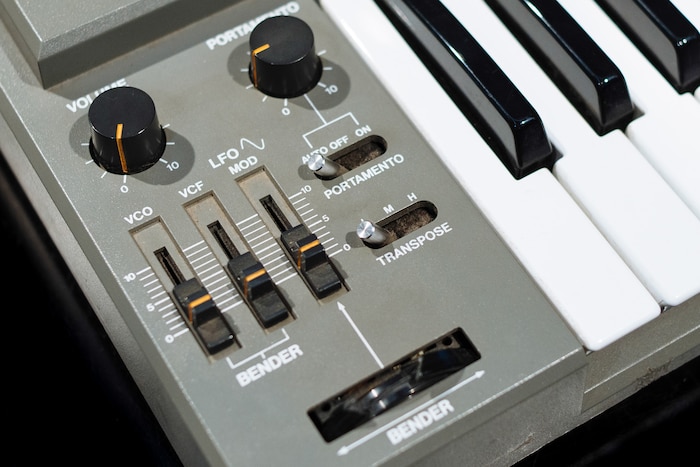
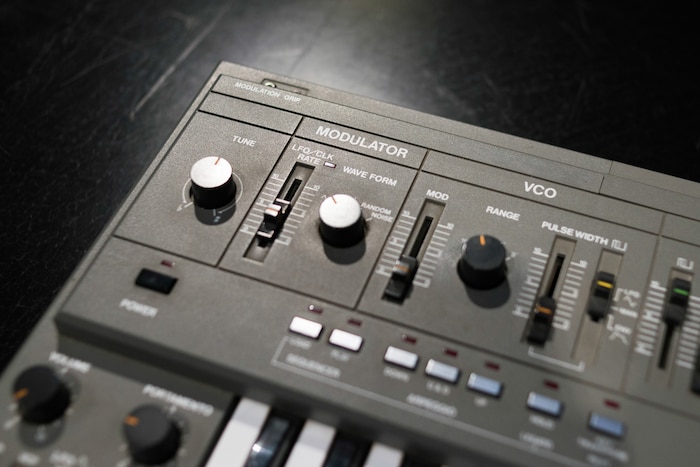
The Roland SH-101 was perfect for the new wave synth-pop generation. Or so the Japanese company thought.
When Roland unveiled the SH-101 monophonic synthesizer – so called because it was only capable of playing one sound or noise at a time – at the tail end of 1982, they were convinced it would become the performance tool of choice for the “keytar” generation. The SH-101 was initially available in three snazzy colors (red, blue and gray), boasted an optional “modulation grip” (useful for bending and tweaking notes while soloing) and could be worn around the neck using Roland’s plush, leather shoulder strap. It was lightweight, too, and could be battery-powered, making it perfect for the new wave synth-pop generation. Or so the Japanese company thought.
Their original magazine adverts from the period emphasized this desire to conquer the supposedly emerging “keytar” market, with young soloists jumping around slogans such as “freedom for expression” and “[the 101] takes you where you want to go.” The SH-101, the marketing material claimed, went from “deep, rumbling lows” to “screaming highs.”
It bombed. Despite its beginner-friendly layout, surprisingly expansive feature set and a relatively cheap price ($495 in the United States and £249 in the UK), the SH-101 never became the go-to mono-synth for would-be keytarists. Instead, wannabe pop stars opted for the Yamaha DX-7. The SH-101 was discontinued in 1986.
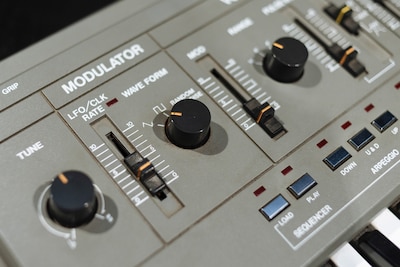
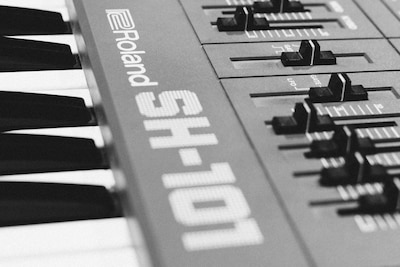
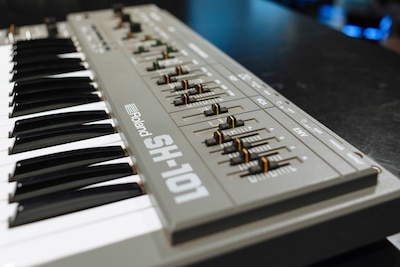
Like other Roland machines from the period, though, the SH-101 took on a life of its own and became one of dance music’s most popular instruments – a synth that arguably did more to fuel the early ’90s house and techno explosion than any other.
“Roland happened to have a sweet product that stiffed in the mainstream market,” says Plus 8 Records co-founder John Acquaviva, whose studio once contained three SH-101 units (one in each available color). “They weren’t visionaries. They screwed up, but then those of us who were making music were buying these cheap things that just happened to talk together. It was just a perfect storm.”
It was the versatility of the SH-101 that proved to be its saving grace. Each unit boasted a 100-note, real-time step sequencer, a white noise generator, an LFO with sine, square or triangular waveforms, an arpeggiator, external clock and CV/gate inputs and a variety of user-friendly knobs and sliders to tweak the sounds it was generating. Although it couldn’t play chords – unlike Roland’s popular Juno range of polyphonic synthesizers – the 101 boasted almost everything else you’d need to create dance music from scratch.
“I think it was one of those machines that everyone used at some point,” says Juan Atkins, recalling its role in the early days of Detroit’s techno movement. “In those days, we were always borrowing each other’s gear – there were only one or two 808s and 909s, but they were passed around between Derrick May, Kevin Saunderson, Eddie Fowlkes, James Pennington and myself. There was an SH-101 in that ‘gear chain’ from around 1985 onwards.”
Atkins recalls three tracks he used the 101 for: “Off To Battle,” “Interference” and “O.K. Coral.” “I liked it for the bass sound – it came with some fat bass noises that you could manipulate rather easily with the sliders,” he recalls. “It was like nothing I’d seen in a magazine, or at a music store. Ultimately it did eventually reside in my studio, so I guess that says a lot.”
Over in the UK, where a new generation was falling head over heels in love with the emerging acid house culture, there was no greater advert for the SH-101’s capabilities than A Guy Called Gerald’s pioneering house hit, “Voodoo Ray.” “It was this synth that caused me to move away from DJing and playing records,” Gerald Simpson says. “The SH-101 had a lot more range than my TB-303, so I could use it to record high, bell-like sounds, really low, deep tones and everything in between.”
Simpson’s Voodoo Ray EP was littered with sounds created using the 101. There were the “bass harmonics” on the title track, a combination of bass, mid and lead lines on “Blow Your House Down” and further textures on “Rhapsody On Acid.” In hindsight, it was hardly coincidence that those most influenced by the record – such as Simpson’s former breakdance rivals in Yorkshire – would make the SH-101 an integral part of their studio set-up.
“We had a drum machine we’d borrowed off someone, and a little Roland SH-101 keyboard,” says Kevin “Boy Wonder” Harper, founding member of Nightmares On Wax with George “E.A.S.E” Evelyn. “One afternoon I had ‘Voodoo Ray’ on the turntable and the SH-101 on the go, trying to tweak the sound of what I was playing on the synth so it would sound like Gerald’s record. When George came back from town, I played him what I’d been doing, and he suggested making a bassline that sounded like my melody. That’s how ‘Dextrous’ came about.” Blessed with heavy sub-bass – and in its original, white label form, a snatch of the female vocal from “Voodoo Ray” – “Dextrous” became one of the first breakthrough tracks on Warp Records.
“The sine waves on the SH-101 were the deepest thing you could get,” says Winston Hazel of the Forgemasters, whose early “bleep” anthem “Track With No Name” was every bit as influential as “Dextrous.” “That track took four hours to make, ’round at Robert Gordon’s home studio. It came out of just messing around with a sampler, a 909 and the 101. It was the first time I’d played on a keyboard, or used any kind of electronic instrumentation.”
Perhaps the best bleep-era advert for the SH-101’s capabilities is Ital Rockers’ “Ital Anthem,” an early production from Mark Millington, later to find fame as Iration Steppas. Released on Bassic Records in the spring of 1990, its deliriously low sub-bass and intense, wild solos are almost exactly what Roland envisioned when they designed it.
“My set-up was really simple,” Millington says. “I had a four-track, a little kiddie drum machine and an SH-101. ‘Ital’s Anthem’ was pretty much done live and direct, with no real arrangement. It was a one-off mix, and I could never get that again.”
By 1990, units could be found in the studios of Aphex Twin, Orbital, the Prodigy, 808 State, the Grid, The Future Sound of London and many others. Most had acquired them from pawn shops, musical equipment exchanges or through the classified advertisements at the back of music technology magazines. The SH-101’s instinctive feel and ease of use made it a perfect machine for Britain’s growing band of dance music producers.
“When you plugged it in, you could hear something you liked straight away,” says 4hero’s Marc Mac, who bought his first unit around 1989. “I just knew as soon as I got it home that I could produce with it. The main thing that I was excited about was the sequencer. It would go in and out of time, even if you connected it to a Roland drum machine through the CV/gate.”
While 4hero rarely made use of the synth’s sub-bass capabilities – something that many other breakbeat, hardcore and later, jungle producers, did – the SH-101 became the beating heart of their studio. “You could make an entire song just using the SH-101,” Marc Mac enthuses. “That was the beauty of it. We used it for everything, including drums and effects. You couldn’t just make melodies, but also crazy sounds and noises, which was brilliant.”
While the SH-101 was never as desirable as the TB-303, TR-808 or TR-909, the fact that it was manufactured by the same company and could operate in unison was a big deal. “All these Roland machines worked well together, especially if you had an MPU-101, which was a little connector box to put them in sync,” John Acquaviva says. “That way, you could have the 808 or 909 synced up. You could record using the sequencer on the 101, and then use the trigger on the 909 to play it in time. They were as close to fully integrated bits of kit as you could find at the time.”
This pre-MIDI connectivity allowed producers – and later live performers – to create in real time. “I used three SH-101s in my live shows,” Gerald Simpson remembers. “I used to clock the onboard sequencer from the TR-808. The CV and gate in and out could be locked to the TB-303, too, creating an orchestra of synthesis.”
Interestingly, the SH-101 remains a popular tool with live electronic music performers, despite units now fetching eye-wateringly high prices on the secondhand market. “It’s the one thing on our tech rider that we really need,” says Jordan “Jordash” Czamanski. “It would be difficult to comfortably do a Magic Mountain High or Juju & Jordash live show without a 101. Because we improvise the shows, the speed in which I can translate a bassline, or another idea in my head, is hugely important. The SH-101 is the quickest out of any synth I know, and it sounds great.”
The unit’s wide palette of sounds is another key facet of its enduring appeal amongst dance music producers. “It’s harder to detect than something like a 303, but it has a very specific way to cut through the mix,” Czamanski says. “It’s kind of a gentle sort of sound. Like all good synths, it has its own character.”
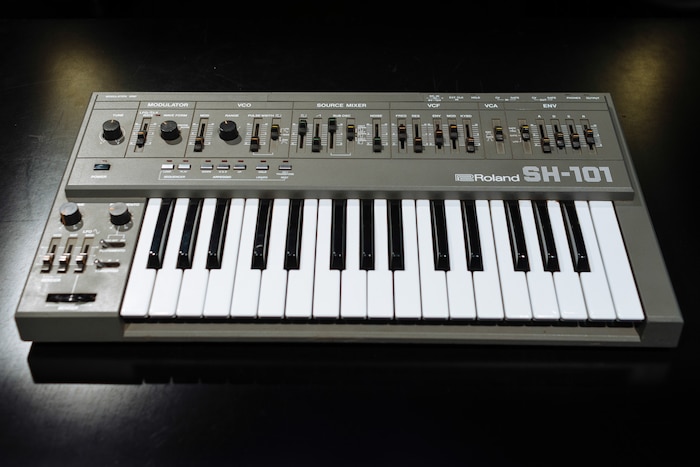
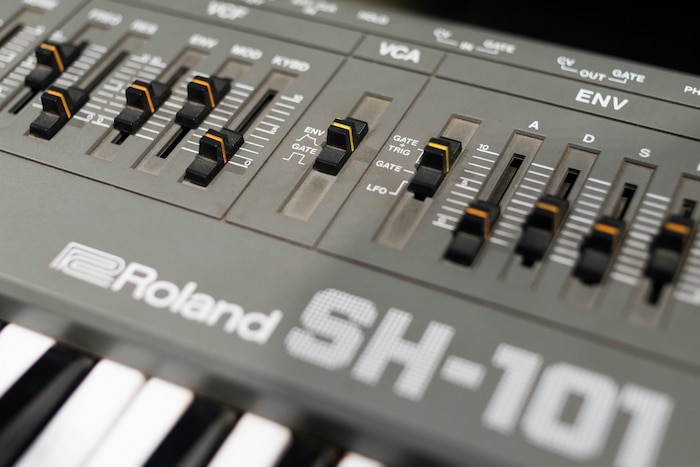
I think you could argue that it was the perfect storm.
While the SH-101’s greatest contribution to the development of dance music remains its widespread use within early, bass-heavy UK dance music, its user base is hugely diverse. During the ’90s and early ’00s, it was a go-to synth for heavyweights like Boards of Canada and Autechre, jack-of-all-trades Luke Vibert, stadium acts the Chemical Brothers and the Crystal Method and psytrance outfits such as Union Jack and Astral Projection. It’s hard to think of another monosynth that’s had a greater impact on electronic music over the last 30 years.
So why, then, has it not been celebrated like the 303, 808 and 909? More importantly, should it be held in the same high esteem as those iconic machines? “It was an important piece of hardware, but not as vital as the TR-808 or 909 or the 303,” Juan Atkins says. “The SH-101 was a good piece of gear. It had its advantages, like every synth, but it was one synth among many, rather than the savior of electronic music. It was just another keyboard.”
John Acquaviva disagrees. He thinks it should be ranked among the five most iconic dance music machines of all time. “I don’t know who the designer of the SH-101 was, but he had the vision to make it the most flexible performance tool you could get at the time,” he says. “In retrospect, it was just right. It allowed people not just to learn, but to then take it to the next level. I think you could argue that it was the perfect storm.”
DJ October is one of a growing band of contemporary producers who ranks the SH-101 highly. The Bristol-based artist also believes that the machine’s immense impact has been largely overlooked.
“The TB-303 has such a unique sound, so you can always tell what it is – it’s the same with the Juno line of polyphonic synths, and their iconic pads, strings and bass,” he says. “The SH-101 has always been more of a chameleon. A lot of the time, you won’t be able to tell that a 101 has been used. Out of all the machines Roland made in the ’80s, it’s the least definable by its sound, but that versatility was its strength. It deserves wider recognition.”
Header image © Camille Blake
